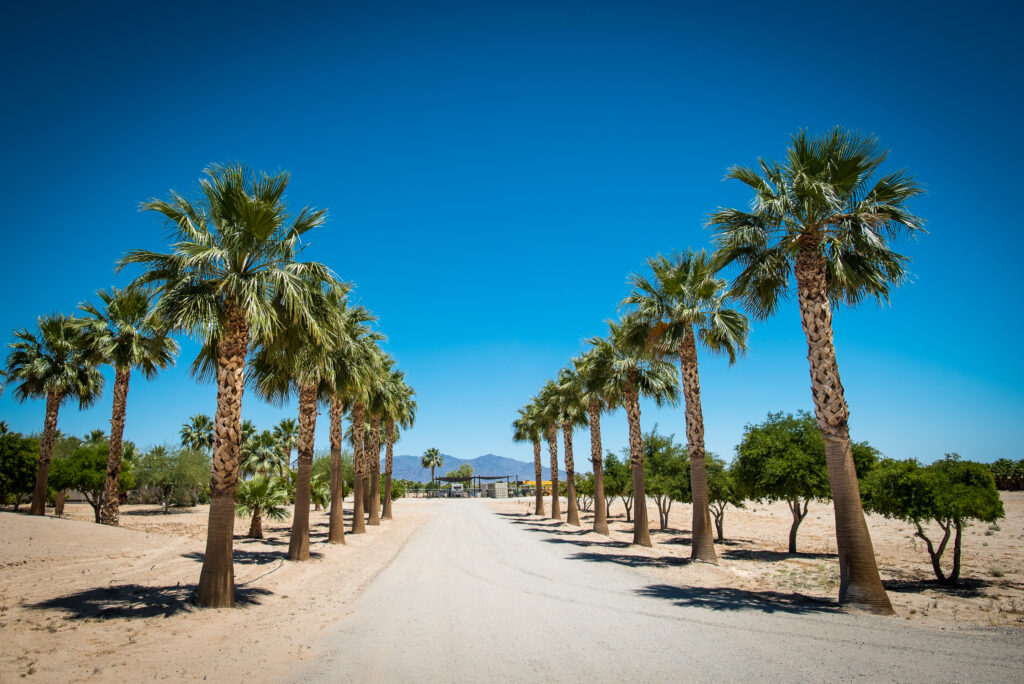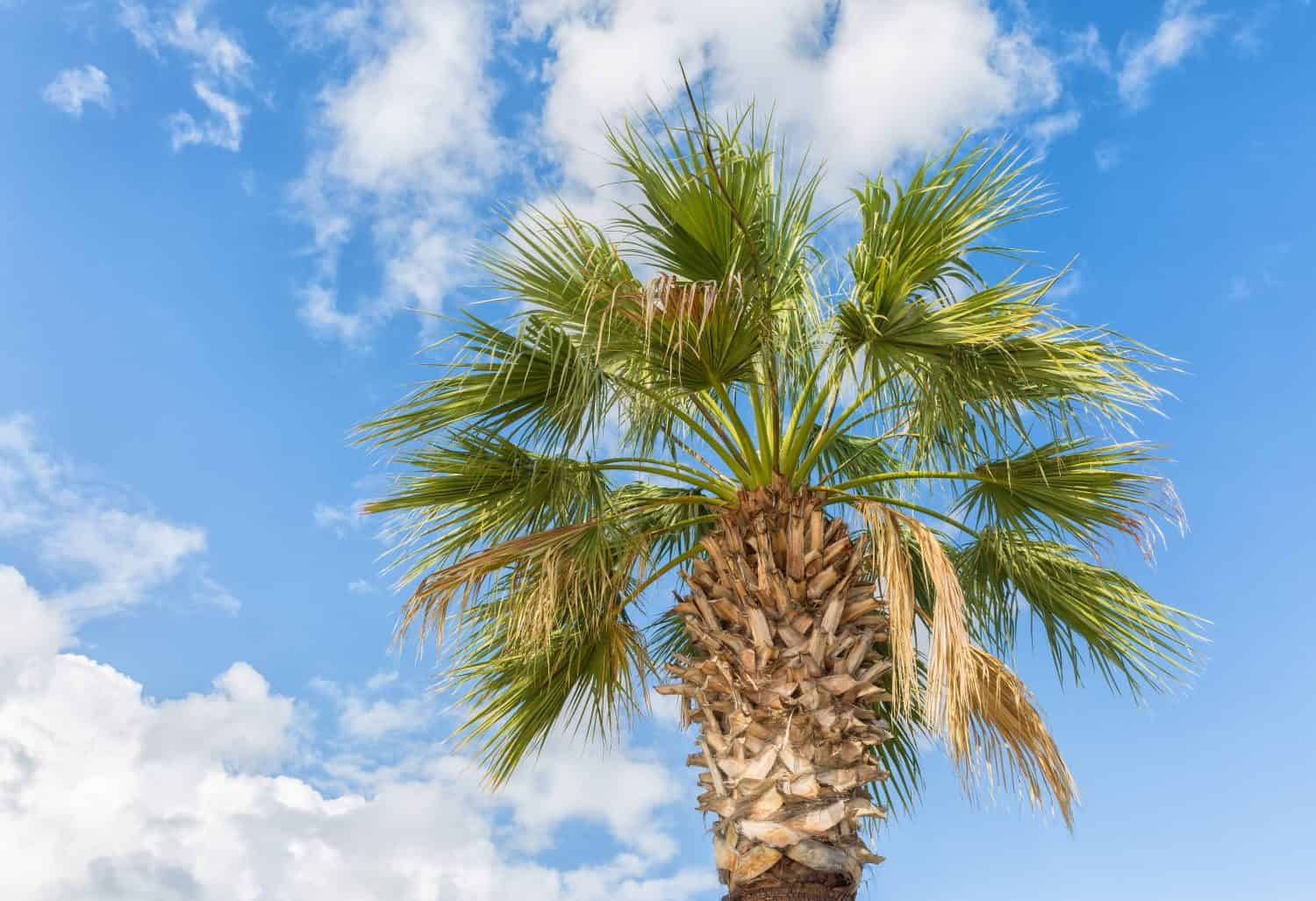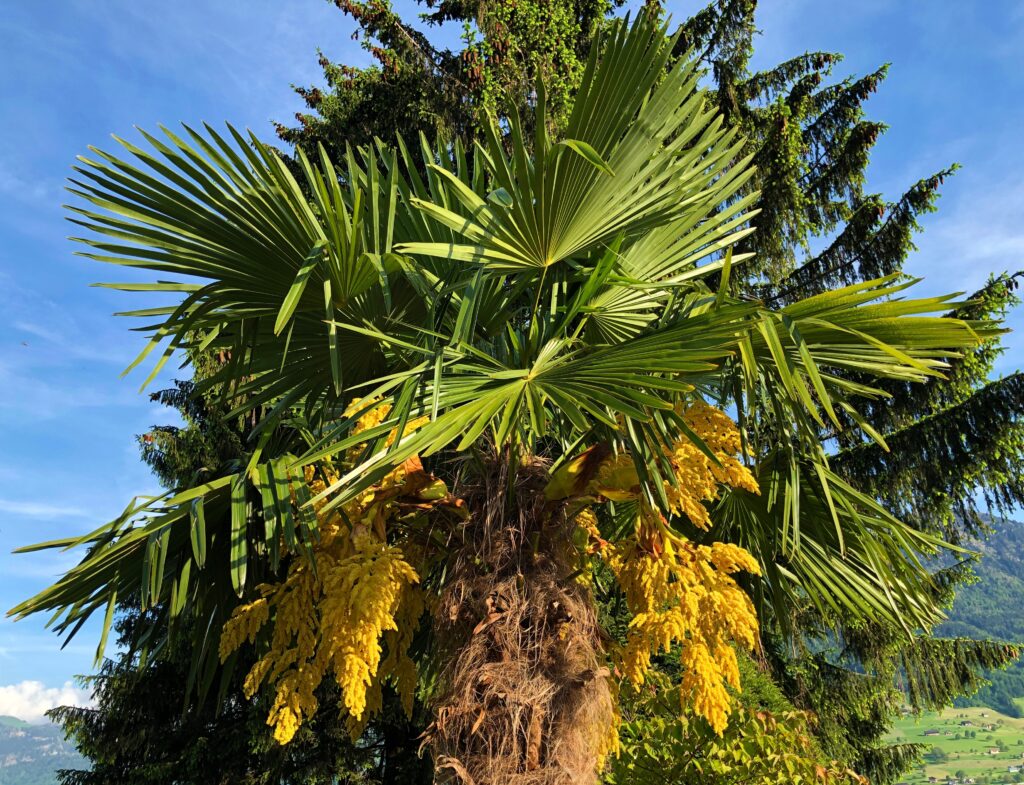Palm trees are in subtropic and tropical regions worldwide, but one of the most populated areas is Mexico. While there are more than 2,600 species of palm trees in the world, there are around 100 in Mexico. Some of the most common palm trees you’ll find in Mexico are the Mexican fan palm, royal palm, and Mexican blue palm.
While not all are native to Mexico, some of the species are. So, we’ll give you a breakdown of the most common palm trees in Mexico and their origins.
#1 Mexican Fan Palm

In Mexico, the Mexican fan palm can be seen lining the streets.
©Papuchalka – kaelaimages/Shutterstock.com
The Mexican fan palm (Washingtonia robusta) also goes by the Mexican washingtonia or skyduster. It’s one of the most prevalent palm trees in Mexico and is found near Sonora in the northwestern region. Even though it has limited distribution, it’s one of the most cultivated subtropical palms in the world. Despite this, many people confuse it with the Washingtonia Filifera, the other palm species in the genus.
A Mexican fan palm can grow up to 82 feet tall and, in some rare cases, even 98 feet. Features that stand out about this palm tree are its petiole leaves that grow up to three feet long and sharp thorns. The tree also bears a pale orange-pink flower and spherical blue-black fruit. While edible, not many people consume it.
#2 Desert Fan Palm

While not residential due to its height, the desert fan palm can be found in coastal regions.
©Mark Godden/Shutterstock.com
The desert fan palm (Washingtonia filifera) also goes by the California fan palm or California palm. It’s native to the southwestern regions of the United States and Mexico. The vegetative buds, fruit, and even flowers produced by the tree can be used in cooking or eaten raw. The leaves and thatching are used to create clothes and sandals. Additionally, the leaf petioles were used to carve spoons and bows historically.
In terms of size, the desert fan palm can grow to a height of 59 feet, but some can end up growing to 80 feet. Distinctive features of the tree include long-thread-like white fibers that can be used to craft clothing. The trunk is also gray and tan, with gray-green leaves. Historically, these palm trees have lived for up to 250 years in good conditions.
#3 Royal Palm

A royal palm tree is often expensive and costs roughly $200 to $250 per tree.
©Cre8 design/Shutterstock.com
A royal palm (Roystonea regia) is also known as a Cuban royal palm or Florida royal palm, depending on where you live. It’s a native palm tree to Mexico and is often found in the United States and parts of Central America. While ornamental, the palm tree can be turned into thatch, timber, and medicine.
In terms of size, the royal palm can grow to heights of 66 to 98 feet tall. The tallest reported royal palm grew up to 113 feet. Notable features include its stout trunk, grey-white coloring, and distinctive green crown shaft. Aside from that, there are flowers all over the tree that are colored white and pink. Similar to other palm trees, it also produces fruit that are less than half an inch long and wide and are purple-black when ripe.
#4 Mexican Palmetto

All Mexican palmettos are frost-hardy and can survive in zone eight or colder.
©Mario Krpan/Shutterstock.com
The Mexican palmetto (Sabal mexicana) is a palm tree known as the Rio Grande palmetto, Texas palmetto, Texas sabal palm, palmetto cabbage, and the palma de micharos. It’s native to southern regions of North America and is all over Mexico. The tree is native to the area but can also be found on the Gulf Coast of the United States.
Appearance-wise, the Mexican palmetto can grow up to 39 to 59 feet with a wide trunk that spans 12 inches in diameter. Distinctive features of this palm tree include a fan-shaped frond and spineless petioles. The tree also has spikes attached to the upper trunk and produces small flowers that turn black when ripe.
#5 Mexican Blue Palm

The Mexican blue palm can handle harsh, dry climates, making it popular in coastal areas.
©Michaelnero/Shutterstock.com
The Mexican blue palm (Brahea armata) goes by the blue hesper palm in some areas and is endemic to Mexico. The palm tree has gained attraction in the gardening industry. It is a popular ornamental plant in Mexico and Baja California.
Height-wise, the tree can reach up to 49 feet and is on the smaller side of Mexican palm trees. Distinctive features include the stout trunk, blue leaves, and long petioles. The flowers of the plan span up to one inch and have a globose shape.
Summary of the 5 Most Common Palm Trees in Mexico
| Number | Name |
|---|---|
| #1 | Mexican Fan Palm |
| #2 | Desert Fan Palm |
| #3 | Royal Palm |
| #4 | Mexican Palmetto |
| #5 | Mexican Blue Palm |
The photo featured at the top of this post is © iStock.com/SlavkoSereda
Thank you for reading! Have some feedback for us? Contact the AZ Animals editorial team.







